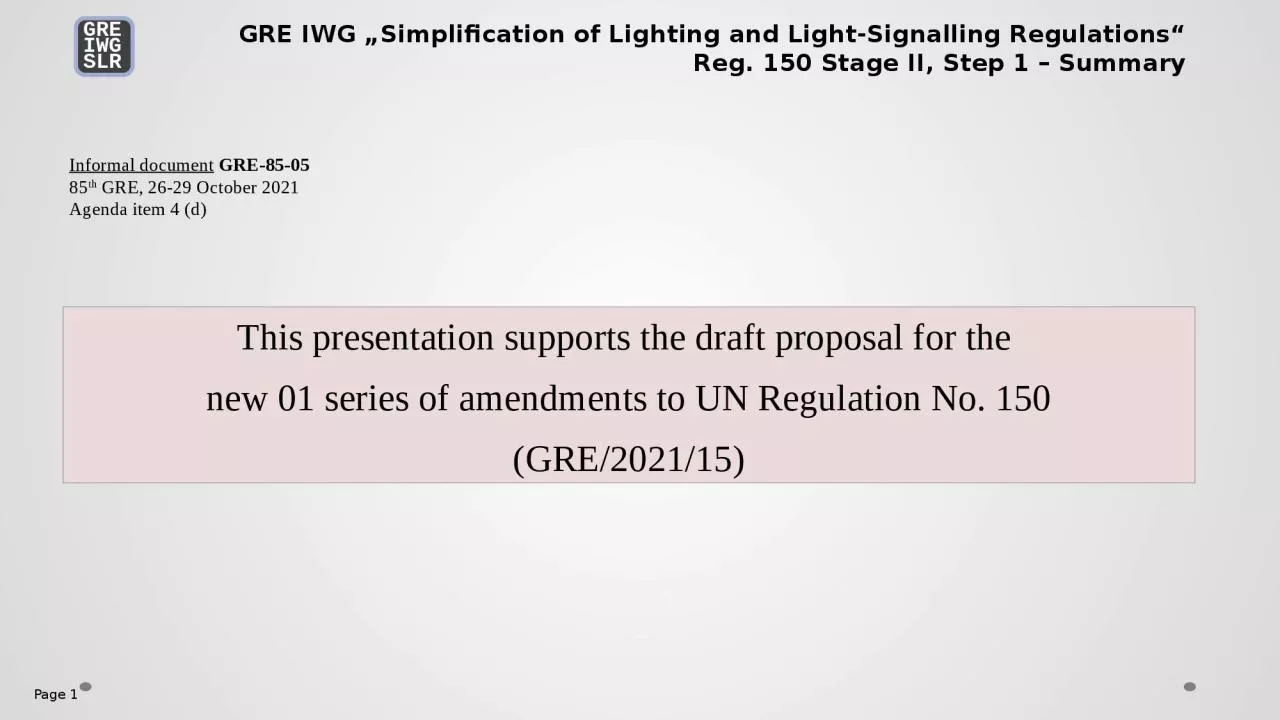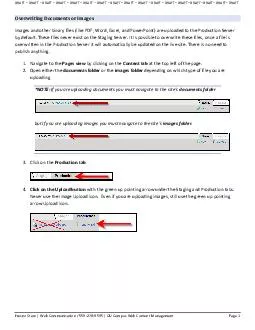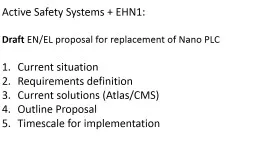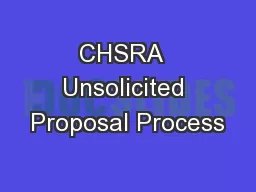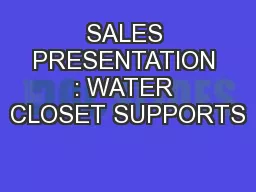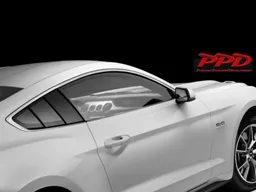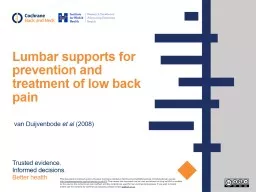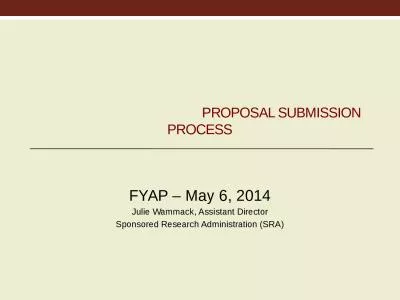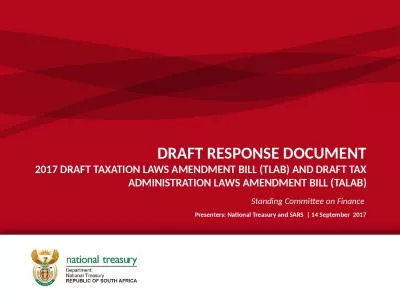PPT-Page 1 This presentation supports the draft proposal for the
Author : FriendlyFlamingo | Published Date : 2022-08-02
new 01 series of amendments to UN Regulation No 150 GRE202115 GRE IWG Simplification of Lighting and Light Signalling Regulations Reg 150 Stage II Step 1
Presentation Embed Code
Download Presentation
Download Presentation The PPT/PDF document "Page 1 This presentation supports the d..." is the property of its rightful owner. Permission is granted to download and print the materials on this website for personal, non-commercial use only, and to display it on your personal computer provided you do not modify the materials and that you retain all copyright notices contained in the materials. By downloading content from our website, you accept the terms of this agreement.
Page 1 This presentation supports the draft proposal for the: Transcript
Download Rules Of Document
"Page 1 This presentation supports the draft proposal for the"The content belongs to its owner. You may download and print it for personal use, without modification, and keep all copyright notices. By downloading, you agree to these terms.
Related Documents

